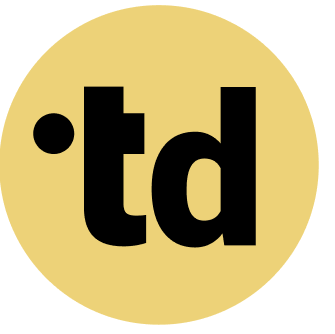Key Takeaways
Avoiding common pitfalls in human-AI teams starts with establishing clear roles and responsibilities to eliminate ambiguity, a step that can improve efficiency by over 25 percent.
Successful AI integration is less about technology and more about user-centered design, transparent governance, and building trust, as 71 percent of organizations do not fully trust autonomous AI.
A structured approach to hybrid team (humans and AI agents) design, focusing on human-in-the-loop oversight and clear protocols, can increase productivity and boost employee satisfaction significantly.
Integrating AI into your workforce can feel like a journey into the unknown, leaving many teams to face overload and chaos. Your team is the hero, tasked with conquering this new world of work, but they need the right tools. The promise was efficiency; the reality is often friction. By *avoiding common pitfalls in human-AI teams*, you equip your people with the clarity they need. Teamdecoder is the effective tool that delivers this clarity, turning operational chaos into predictable flow and helping you with your organizational development.
Practical Framework for Team Architects
As a Team Architect, you can apply these principles to your organization:
- Map Current State: Document existing roles and responsibilities using a tool like teamdecoder.
- Identify Gaps: Where are roles unclear? Where do humans and AI agents overlap?
- Define Clear Boundaries: Specify which tasks are handled by humans vs. AI agents.
- Create Accountability: Assign clear decision rights for each role.
- Iterate and Improve: Continuously refine based on team feedback.
Build Trust to Bridge the Human-AI Divide
A staggering 71 percent of organizations admit they cannot fully trust autonomous AI agents for enterprise use. This trust deficit is a primary barrier, as most European workers believe AI requires careful management to protect data and ensure transparency. Without trust, even the most powerful AI is just an expensive decoration. Many teams report adoption rates below 30 percent due to this fundamental mistrust.
Here are some snack facts on the core challenges:
- Unclear Roles: A systematic literature review identified ambiguous roles as a top challenge in human-AI teams, causing significant project delays.
- Fragmented Data: A recent study found that over 50 percent of AI initiatives are hampered by data silos and legacy systems.
- Ethical Concerns: Research from the EU Policy Lab highlights that human overseers are just as likely to follow biased AI advice, perpetuating discrimination.
- Low Adoption: In Germany, many managers face a critical shortage of qualified experts, which directly hinders successful AI implementation.
Overcoming this trust chasm requires a clear framework for human-AI interaction, which begins by defining who does what.
Define Clear Roles to Eliminate hybrid team (humans and AI agents) Ambiguity
Ambiguity is the enemy of performance, yet it's the default state in many emerging hybrid teams. This lack of role clarity is a leading cause of friction and project failure in human-AI collaboration. When people and bots have overlapping or undefined responsibilities, tasks are duplicated, deadlines are missed, and frustration mounts. One study found that overall team performance suffered when an automated worker was added to low- and medium-skilled teams.
Architect Insight: Team Architects are the heroes who conquer this chaos by designing clear swim lanes for every team member, human or AI. They focus on strategy operationalization by mapping out every role and responsibility. This ensures that AI handles the many repetitive knowledge worker tasks it excels at, freeing up humans for strategic work.
Our Playful Tip: Use teamdecoder to visualize your team structure in minutes, not weeks. You can try for free to see how clear roles can make your *Teams Just Wanna Have Fun*. This simple step provides the repeatable toolkit consultants and internal enablers need for fast clarity during restructuring. A clear role definition process is the first step toward better designing workflows for human-AI collaboration.
Establish Strong Governance to Prevent Chaos
Without clear rules, integrating AI can feel like the Wild West, leading to significant cultural and operational risks. Recent statistics show a some increase in turnover among teams where AI agents handle more than some tasks. This highlights the emotional toll of change fatigue when governance is absent. A lack of a cohesive AI strategy is a primary obstacle for many German companies, leading to cultural resistance.
Deep Dive: Effective hybrid team governance is not about restricting AI; it's about enabling it safely. The EU AI Act is already setting new standards for accountability and transparency. Your governance framework should define the scope for AI execution, establish ethical oversight, and adapt performance metrics for hybrid teams. For example, some firms now measure "agent yield"-the ratio of human-guided decisions to autonomous agent actions. This approach provides a structured path for governing AI agents and makes change management manageable.
Mitigate Algorithmic Bias with Human-in-the-Loop Systems
AI models can perpetuate and amplify societal biases if trained on skewed data, a critical pitfall for any organization focused on DEI. For instance, some recruitment AI systems have shown bias against female candidates because they were trained on historical data dominated by male hires. This not only undermines fairness but also exposes organizations to legal and reputational risks. A study involving German HR professionals confirmed that pre-existing human biases often persist despite the use of a "fair" AI.
A human-in-the-loop (HITL) approach is essential for accountability. This model inserts trained professionals at key points to review, correct, or veto machine-generated outcomes. The goal is not to slow down automation but to add a layer of critical judgment where context is key. This is a core principle for building sustainable team structures. For Team Architects, this means designing workflows where AI provides the first pass, but humans make the final call on sensitive decisions. This ensures you are managing AI ethics proactively.
Drive Adoption by Making Hybrid Workflows Clear and Repeatable
Even the best technology fails if no one uses it, and AI adoption rates can be alarmingly low. A third of European workers (a significant portion) do not feel suitably trained to use AI efficiently, creating a major barrier to scaling. This is where Team Architects become change champions, transforming complex new systems into simple, repeatable processes. The goal is to make new workflows intuitive from day one, especially for a new leadership team.
Here is how to improve your task force management:
- Visualize Roles Instantly: Use a tool to map out who is responsible for what, including AI agents.
- Create Feedback Loops: Build clear processes for humans to correct and train the AI, improving its performance over time.
- Standardize Workflows: Develop templates for common hybrid tasks, from customer service handoffs to data analysis.
- Focus on Clarity: Ensure every team member understands how AI contributes to their goals, reducing fear and increasing buy-in.
By providing this level of clarity, you can turn resistance into adoption. Teamdecoder is designed to help you build these clear, scalable roles effortlessly. See our pricing to find the right plan for your team. This clarity is key to optimizing task allocation.
Shape Your Team and Make Change Feel Like Play
Avoiding common pitfalls in human-AI teams is not a technical challenge; it is a design challenge. It requires a shift from chaotic adoption to intentional architecture. By focusing on trust, role clarity, and smart governance, Team Architects can build resilient, high-performing hybrid teams. The journey from overload to flow is achievable with the right map in hand. Now is the time to build teams where humans and AI truly click.
Try teamdecoder for free - shape your team and make change feel like play!
More Links
Fraunhofer IAO offers an article detailing how companies can successfully collaborate with humans and AI in teams, providing valuable insights into effective strategies for integration.
FAQ
How can teamdecoder help my hybrid team (humans and AI agents)?
Teamdecoder helps you visually map out roles and responsibilities for both humans and AI agents in minutes. This clarity reduces ambiguity, streamlines workflows, and provides a repeatable toolkit for organizational development, making it easier to manage change and scale your team.
Is teamdecoder suitable for small startups?
Yes, teamdecoder is designed for teams of all sizes. Our free plan is perfect for startups with five or fewer employees, allowing you to scale roles and establish clear team structures from day one.
What kind of templates do you offer?
We offer various templates to accelerate your team design process, including frameworks for customer centricity, DEI, and sustainability. These templates provide a solid foundation for building effective roles and responsibilities within your team.
Can I use teamdecoder for change management?
Absolutely. Teamdecoder is an excellent tool for change management and transformation projects. It provides fast clarity during restructuring and helps internal enablers and consultants communicate new team structures effectively, reducing resistance and accelerating adoption.





